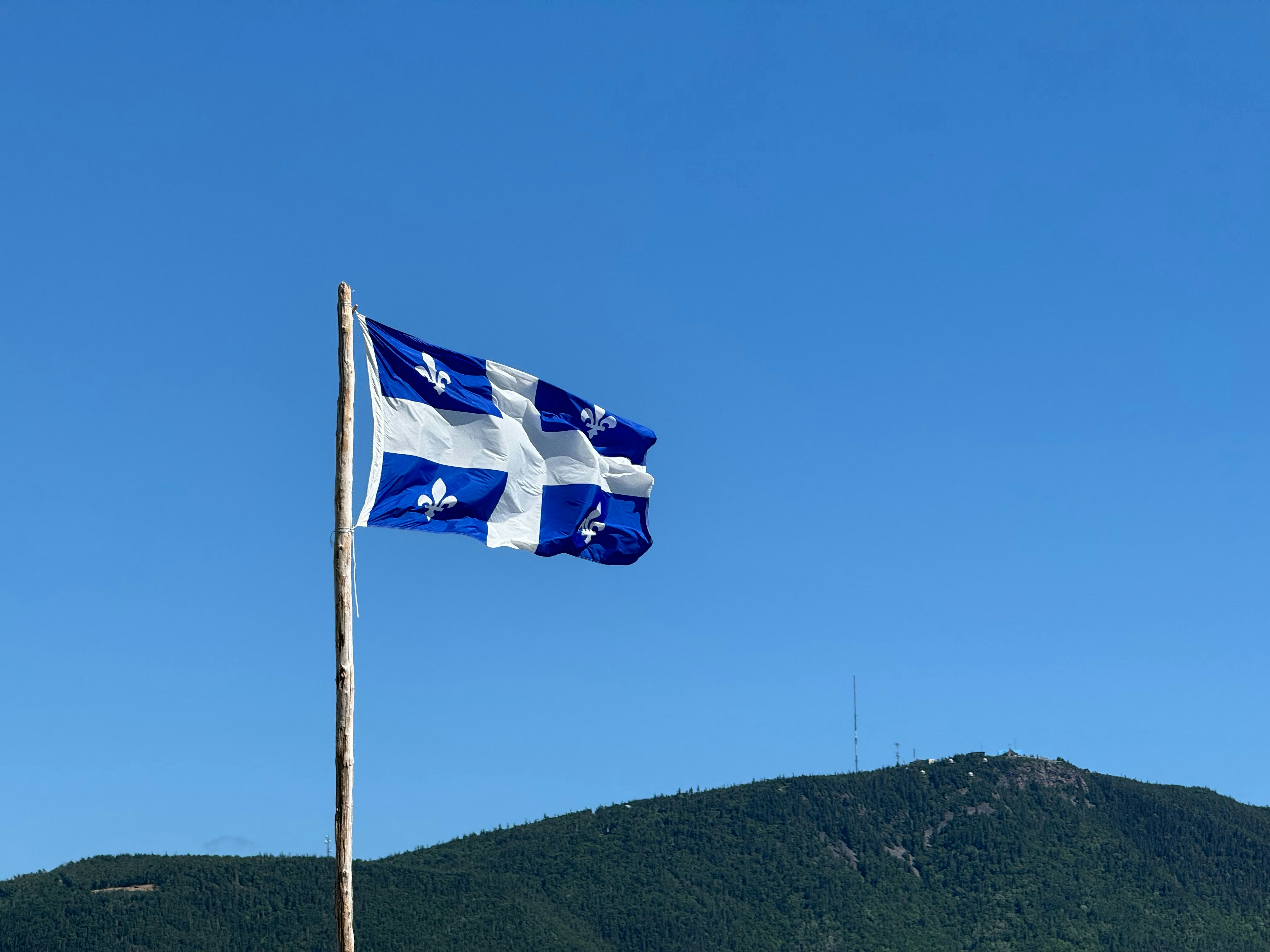Radisson and Maple Gold Drive Next Phase of High-Grade Discovery in Quebec’s Abitibi Belt

Radisson & Maple Gold advance Abitibi projects via institutional capital, systematic drilling & infrastructure leverage, targeting resource growth at $30-40/oz discovery costs.
- Radisson Mining's O'Brien Gold Project targets 1.5 million ounces of high-grade resources with a 140,000-meter drill program, the largest in company history, focusing on systematic expansion below the historical kilometer-depth limit to a new two-kilometer economic floor.
- CEO Kiran Patankar restructured Maple Gold's joint venture with Agnico Eagle, securing investment at a premium while reducing corporate costs from $6 million to $2 million annually and raising $13 million at a 100% premium following the restructuring.
- Both companies leverage Quebec's Abitibi region's extensive mining infrastructure, including existing mills, grid power at 4 cents per kilowatt-hour, highway access, and established mining complexes, reducing development capital requirements and enabling toll milling opportunities.
- Recent financings for both companies attracted long-term institutional investors rather than retail speculators, with Radisson raising approximately $25 million through a fully institutional bought deal and Maple securing strategic investment from US mutual funds.
- Both CEOs prioritise technical de-risking and resource expansion over premature development scenarios, focusing on discovering quality ounces at $30-40 per ounce while current valuations sit around $150 per ounce, creating immediate shareholder value accretion.
The Abitibi greenstone belt remains one of the world's most prolific gold-producing regions, and two junior mining companies are positioning themselves to capitalise on the district's infrastructure advantages. Matthew Manson, President and CEO of Radisson Mining Resources, and Kiran Patankar, President and CEO of Maple Gold Mines, outlined their strategic approaches to advancing gold projects in Quebec while navigating capital markets.
Both executives emphasised disciplined capital allocation, technical de-risking, and building institutional shareholder bases rather than pursuing speculative short-term gains. Their companies share common strategic investor Michael Gentile, who has provided both capital and board-level expertise.
Radisson Mining: Systematic Expansion of a High-Grade Legacy Asset
Radisson Mining's O'Brien Gold Project represents a historical high-grade gold mine that ceased operations in 1957 when gold traded at $35 per ounce. The mine reached one kilometer depth before economic, not geological, constraints forced closure. Manson explained the company now views two kilometers as the economic floor for exploration.
The project currently hosts approximately 1.5 million ounces of high-grade resources adjacent to historical mine workings, with a 140,000-meter drill program underway to grow the resource base. Located directly on a highway between Rouyn-Noranda and Val-d'Or, the property sits surrounded by existing mills and mining operations.
Manson emphasised that the deposit type high-grade quartz sulfide veins within the Piché formation adjacent to the Cadillac-Larder Lake break represents a well-understood geological model. The Lapa deposit, operated by Agnico Eagle until 2018, served as a direct analog, demonstrating commercial viability of similar geological settings.
Maple Gold: Restructuring for Growth on the Cadillac Break
Maple Gold controls over 481 square kilometers straddling the Casa Berardi Break, hosting over 3 million ounces of gold resources including the historical Eagle mine - Agnico Eagle's namesake property that produced one million ounces at 6.5 grams per tonne between 1974 and 1993.
Patankar's leadership since late 2023 focused on operational efficiency and strategic repositioning. He reduced general and administrative expenses from $6 million annually to $2 million approximately $175,000 per month through measures including subleasing office space while maintaining all necessary public company functions.
The critical strategic shift came with restructuring Maple's joint venture with Agnico Eagle. Patankar recognised that in a strengthening capital environment, maintaining greater corporate control would better position Maple for value creation. The restructuring resulted in Agnico Eagle taking a strategic equity position while Maple regained 100% project ownership, followed by Agnico Eagle's participation in subsequent financings at premium valuations.
Capital Markets Strategy and Institutional Positioning
Both companies executed deliberate capital markets strategies focused on attracting long-term institutional investors. Radisson's most recent financing of approximately $25 million was structured as a fully institutional bought deal with 22 institutions participating, no flow-through shares, and no warrants. This contrasted with earlier non-brokered financings organised through Michael Gentile's network.
Maple's financing evolution proved dramatic. Following Gentile's initial investment at 60 cents per share with full warrants, Maple subsequently raised capital at $1.20, a 100% premium with no warrants and exclusively institutional participation, including a $7 million lead order from a US mutual fund taking a 10% position.
Patankar implemented 12-month lock-up agreements for new investors in earlier rounds, ensuring alignment around long-term value creation. This shareholder selection discipline reflects both CEOs' emphasis on sustainable corporate development over promotional activities.
Interview with Kiran Patankar, CEO of Maple Gold Mines & Matt Manson, CEO of Radisson Mining Resources
Infrastructure Advantage and Mill Integration Strategy
Quebec's Abitibi region offers infrastructure advantages that fundamentally alter project economics. Both companies benefit from highway access, grid power at 4 cents per kilowatt-hour, established workforce availability, and proximity to multiple operating mills with existing permitted capacity.
Manson articulated a contrarian view on small-scale, bootstrapped development strategies. Rather than pursuing phase-by-phase development to minimise initial capital expenditure, he advocates for right-sizing projects based on optimal resource extraction and processing economics.
"Big companies don't do that because they have balance sheet flexibility to not do that."
Manson emphasised that major producers properly size operations rather than artificially constraining development.
For Radisson, maximum value likely derives from integration into an existing regional mill complex rather than constructing standalone processing facilities. The company completed metallurgical testing demonstrating technical compatibility with nearby facilities, positioning the asset for potential acquisition by producers seeking to extend mill life.
Patankar emphasised that while Maple maintains earlier-stage status, the company actively engages in trade-off studies and engineering assessments with Agnico Eagle, providing conceptual frameworks for eventual development scenarios including open pit operations transitioning to underground mining or toll milling arrangements.
The Michael Gentile Factor
Michael Gentile emerged as a central figure in both companies' recent evolution, providing capital and board-level expertise. Both CEOs emphasised that Gentile's approach differs from typical junior mining board members. Manson described Gentile as conducting thorough diligence, executing according to clear investment philosophy, and providing substantive board value.
Gentile organised a European investor roadshow spanning five cities, where he opened presentations with his investment thesis before portfolio companies illustrated supporting examples. For Maple, Gentile's involvement followed demonstrated execution on corporate restructuring, cost reduction, and technical advancement reflecting his preference for management teams that deliver results before receiving capital support.
Exploration Philosophy and Technical Execution
Both companies focus on systematic proof-of-concept work before broad-area programs. Manson emphasised that in stronger capital markets, companies with quality assets can raise sufficient capital to execute multi-year plans. Radisson's 140,000-meter program represents this philosophy, a sufficiently sized program to test expansion potential systematically.
The company publicly stated exploration targets including grade ranges, tonnage estimates, and ounce objectives, providing measurable benchmarks for assessing success. Maple similarly emphasises technical understanding advancement over promotional drilling. When asked by institutional investors what he would do if capital weren't constrained, Patankar outlined comprehensive programs addressing resource expansion and development pathway de-risking.
Manson noted discovery costs around $30-40 per ounce against current company valuations near $150 per ounce, creating immediate accretion through successful exploration.
Key Takeaways
The strategic approaches articulated by Radisson Mining and Maple Gold Mines offer instructive examples for junior mining companies. Corporate efficiency matters significantly - Patankar's overhead reduction from $6 million to $2 million annually extended the runway and demonstrated capital discipline to investors.
Shareholder quality often matters more than quantity. Both companies deliberately structured financings to attract long-term institutional investors even when this meant smaller raises. Technical de-risking through systematic exploration creates more value than premature development scenarios. Both CEOs rejected small-scale production schemes that minimise initial capital but compromise long-term economics.
Infrastructure advantages in established mining districts provide genuine economic benefits. The ability to toll mill ore, access grid power, hire experienced workforce, and utilise existing transportation infrastructure materially improves project economics and reduces capital requirements and permitting timelines.
Strategic investors like Gentile add value beyond capital through governance expertise, network access, and strategic guidance. The Abitibi region's combination of geological endowment, infrastructure density, and mining culture positions well-managed junior companies for success in rising gold price environments.
TL;DR:
Radisson Mining and Maple Gold Mines are advancing systematic exploration programs on high-grade gold projects in Quebec's infrastructure-rich Abitibi region, backed by recent institutional financings totaling approximately $38 million combined. Both companies emphasise technical de-risking over premature development, maintaining lean corporate structures while deploying capital into 140,000-meter (Radisson) and expanded drilling programs (Maple), with discovery costs around $30-40/ounce against valuations near $150/ounce creating immediate accretion opportunities.
FAQs (AI Generated)
Analyst's Notes




Subscribe to Our Channel
Stay Informed



































